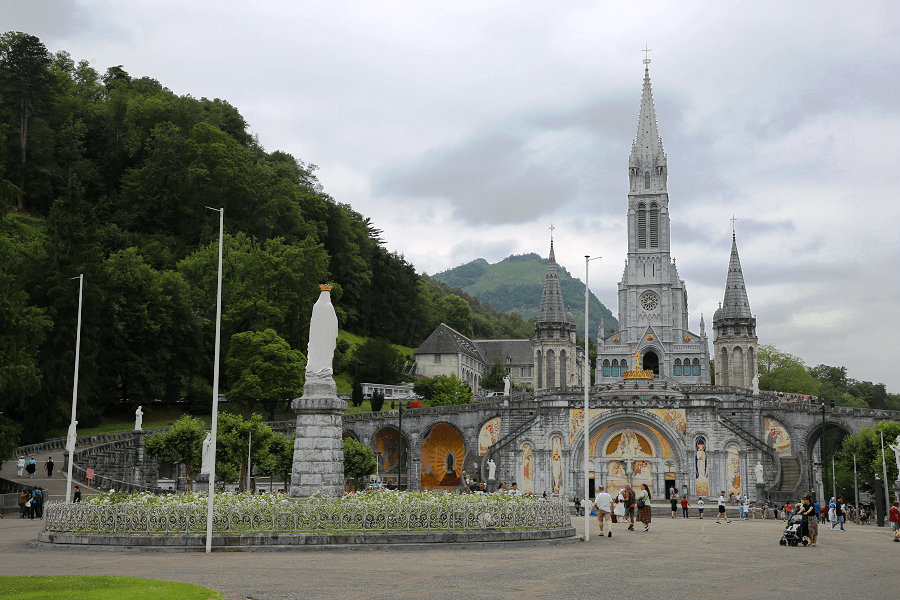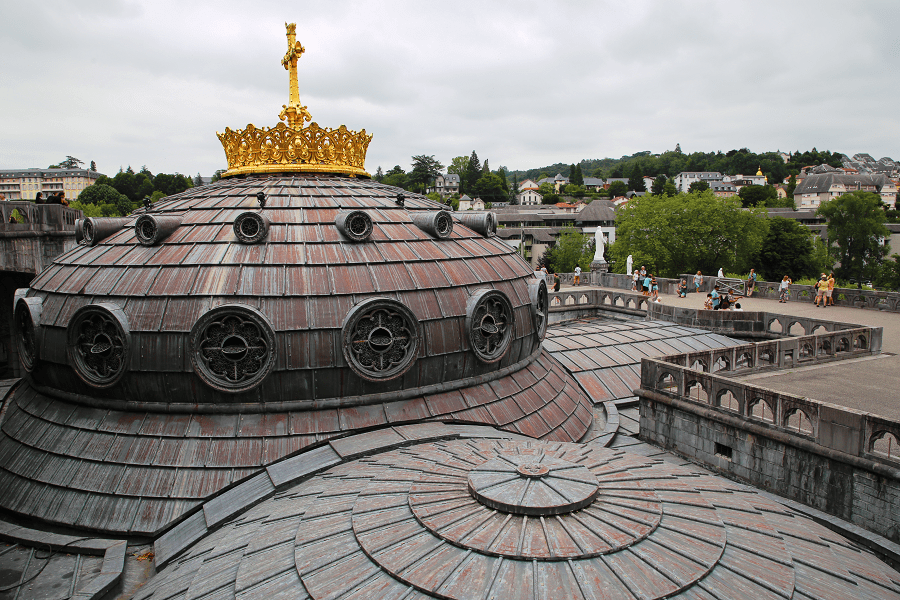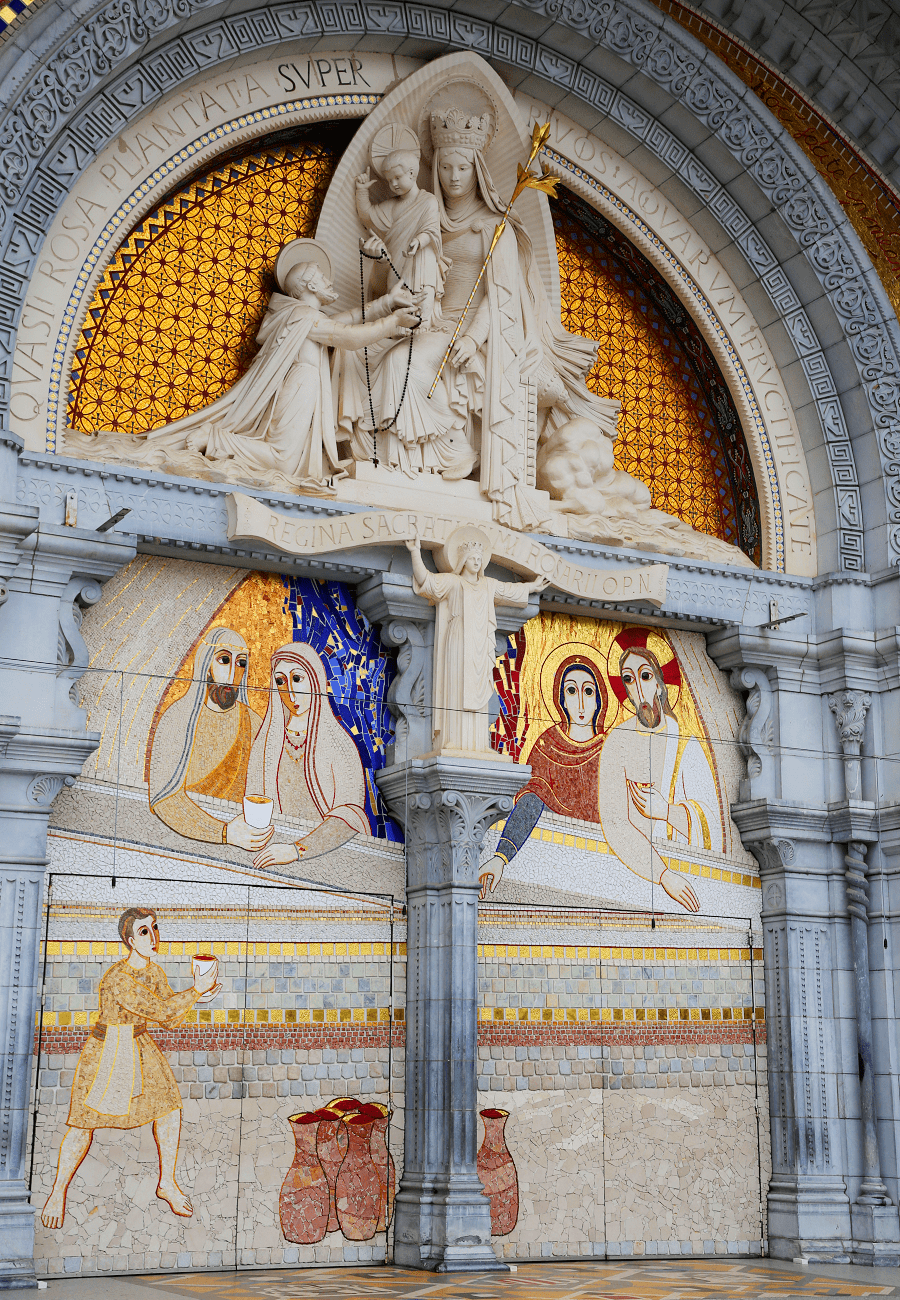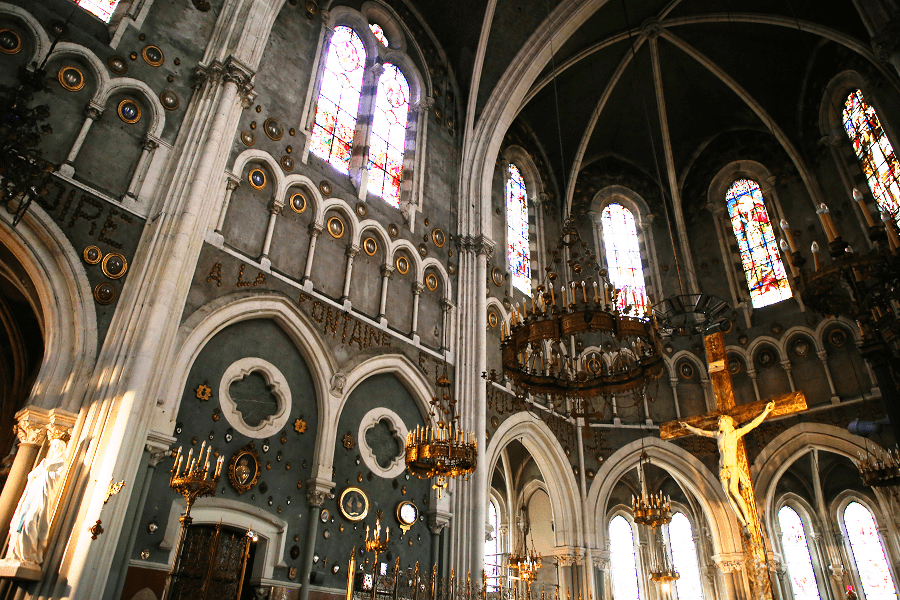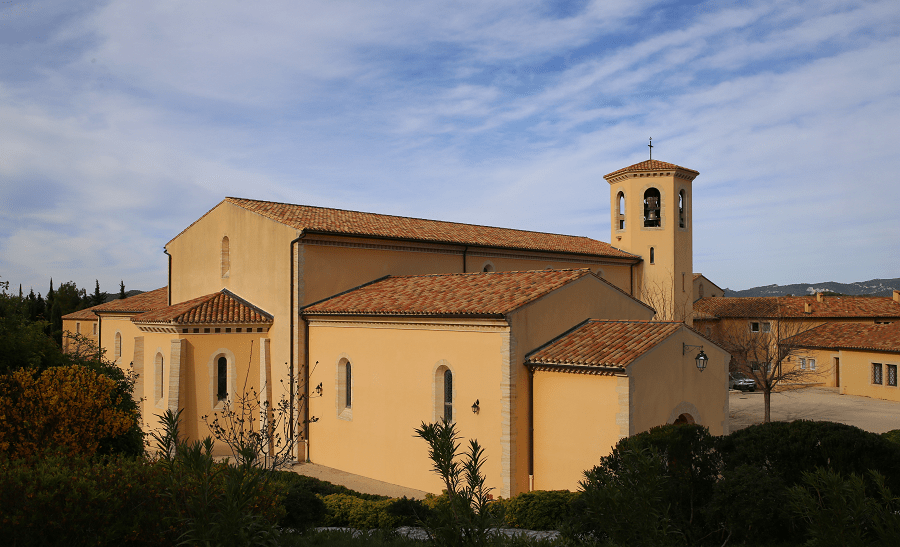The Sanctuary of Our Lady of Lourdes, or Sanctuary of Lourdes, is a Catholic shrine and Marian pilgrimage site located in Lourdes, Hautes-Pyrénées, Occitania, France (Pyrenees).
It is comprised of several buildings and places of prayer on the site of the Marian apparitions of Lourdes in 1858, during which the young Lourdes resident, Bernadette Soubirous, said she saw – on several occasions – a lady identified as the Virgin Mary, apparitions recognized in 1862 by the Catholic Church.
It’s an important stop on the Camino de Santiago route to Santiago de Compostela.
The sanctuary includes the Massabielle Cave, in which the apparitions took place, as well as its surroundings on an area of 52 hectares. The main religious buildings are the Basilica of the Immaculate Conception, the Basilica of the Rosary and the Basilica of Saint-Pie-X. The area of the sanctuary, crossed by the Gave, also includes the Sainte-Bernadette church, ten chapels, an esplanade (on which processions take place), a meadow, a reception for the sick, fountains, swimming pools and the path cross of the Espélugues on a hill.
The site is famous for the water source that has sprung from the cave since the apparitions and for the miraculous healings, for which this water is said to be responsible. Each year, millions of pilgrims, including many sick and disabled people whose welcome is provided by the Hospitalité Notre-Dame de Lourdes, go there to show their devotion to Our Lady of Lourdes.
The Rosary Basilica is the third of the churches to be completed on the site (after the Crypt and the Upper Basilica). It was designed by architect Leopold Hardy and completed in 1899. It was consecrated in 1901 and has a capacity of 1,500 worshippers. Its style is influenced by Byzantine architecture.
In 2006-2007, the interior and exterior of the basilica were extensively renovated and the mosaics (many of which were deteriorating) restored.
The Rosary Basilica has a semicircular, white marble entry facade, depicting Mary handing the Rosary to St. Dominic.
In 1941, the white marble side doors of the Basilica were engraved with a message of gratitude to Marshal Philippe Pétain, who visited Lourdes in 1941 and allowed the Church to reclaim ownership of the Domain. In translation, this inscription read:
In memoriam 1940-41, on the morrow of our disasters, France is trying to rediscover her soul under the government of Maréchal Pétain.
In 2007, the exterior facade of the Basilica was modified to include mosaics depicting the Luminous Mysteries, which were added to the traditional fifteen mysteries by Pope John Paul II in 2002.
Address: 1 Av. Mgr Théas, 65100 Lourdes, France
Architectural style: Neo-Byzantine architecture
Opened: 1889
Capacity: 1,500
Hours:
Saturday 8 AM–6 PM
Sunday 8 AM–6 PM
Monday 8 AM–6 PM
Tuesday 8 AM–6 PM
Wednesday 8 AM–6 PM
Thursday 8 AM–6 PM
Friday 8 AM–6 PM
Phone: +33 5 62 42 78 78
How to get to?
Distances by car:
From Paris: 7 hr 46 min (829 km) via A10
From Biarritz (tolls): 1 h 49 min (159 km) via A64
From Dax (tolls): 1 h 38 min (126 km) via A64
From Nantes (tolls): 5 h 35 min (592 km) via A83, A10 and A65
From Bordeaux (tolls): 2 h 43 min (251 km) via A65
From Toulouse (tolls): 1 h 57 min (176 km) via A64
From Monaco (tolls): 7 h 4 min (752 km) via A8
From Nice (tolls): 6 h 55 min (737 km) via A8
From Marseille (tolls): 5 h 24 min (572 km) via A64
From Avignon (tolls): 4 h 39 min (499 km) via A9, A61 and A64
From Perpignan (tolls): 3 h 37 min (377 km) via A61 and A64
From Andorra (tolls): 3 h 51 min (283 km) via A64
From Madrid: 6 hr 24 min (653 km) via A-1
From Moscow: 40 hr (3,625 km) via E30/M1
From Belgrade: 20 hr 42 min (2,056 km) via E70
From Istanbul: 31 hr (3,005 km) via E70
From Bern: 9 hr 57 min (1,009 km) via A9
See here Pyrenees travel guide
See here France travel guide
See here Spain travel guide



